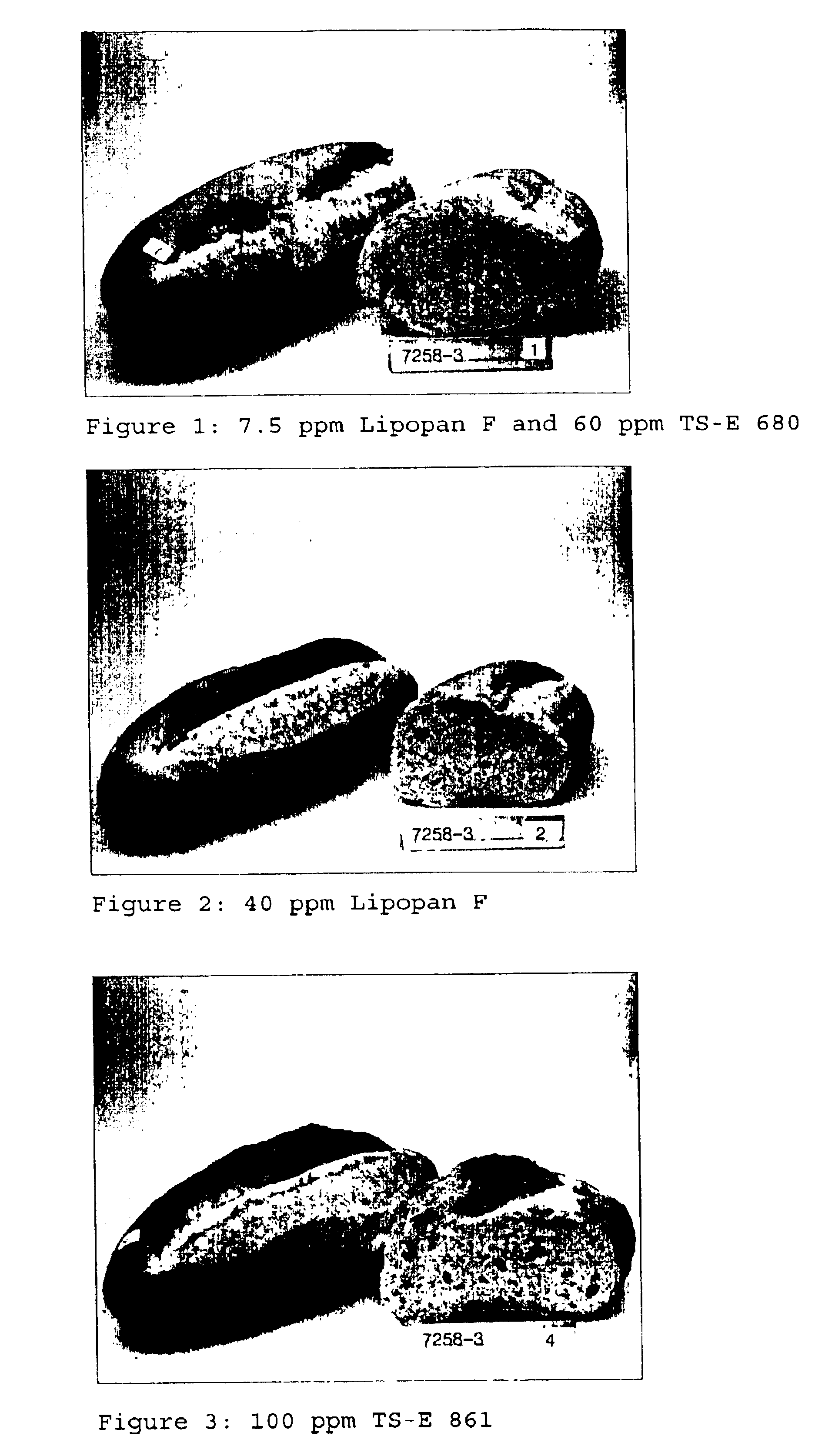Method of improving the properties of a flour dough, a flour dough improving composition and improved food products
a technology of flour dough and composition, applied in the field of food manufacturing, can solve the problems of low glucose content in cereal flour, limiting factor, and failure to use glucose oxidase alone, and achieve the effects of improving dough stability, improving rheological characteristics of dough, and improving the stability of dough
- Summary
- Abstract
- Description
- Claims
- Application Information
AI Technical Summary
Benefits of technology
Problems solved by technology
Method used
Image
Examples
example 1
1.1. Purification of Hexose Oxidase from Chondrus crispus
[0150]A purified hexose oxidase preparation was obtained using the below extraction and purification procedures. During these procedures and the following characterizations of the purified enzyme, the following assay for determination of hexose oxidase activity was used:
1.1.1. Assay of Hexose Oxidase Activity
[0151]The assay was based on the method described by Sullivan and Ikawa (Biochimica et Biophysica Acta, 1973, 309:11-22), but modified to run in microtiter plates. An assay mixture contained 150 μl β-D-glucose (0.1 M in 0.1 M sodium phosphate buffer, pH 6.3), 120 μl 0.1 M sodium phosphate buffer, pH 6.3, 10 μl o-dianisidine-dihydrochloride (Sigma D-3252, 3.0 mg / ml in H2O), 10 μl peroxidase (POD) (Sigma P-8125, 0.1 ml in 0.1 M sodium phosphate buffer, pH 6.3) and 10 μl enzyme (HOX) solution. Blanks were made by adding buffer in place of enzyme solution.
[0152]The incubation was started by the addition of glucose. After 15 m...
example 2
Dough Improving Effect of Hexose Oxidase Extracted from Chondrus crispus
2.1. Purification of Hexose Oxidase from Chondrus crispus
[0171]For this experiment, hexose oxidase was prepared in the following manner:
[0172]Fresh Chondrus crispus material was collected at the coast of Brittany, France. The material was freeze-dried and subsequently ground. 40 g of this ground material was suspended in 1000 ml of 20 mM triethanolamine (TEA) buffer, pH 7.3 and left to stand at 5° C. for about 64 hours with gentle agitation and then centrifuged at 2000×g for 10 minutes. The supernatant was filtered through GF / A and GF / C glass filters followed by filtering through a 45 μm pore size filter to obtain a filtrate preparation of 800 ml having hexose oxidase activity corresponding to a glucose oxidase activity of 0.44 units per g of preparation. The activity was determined using the below procedure.
[0173]The supernatant was applied onto a 330 ml bed volume chromatographic column with anionic exchange...
example 3
Dough Improving Effect of Hexose Oxidase Extracted from Chondrus crispus
[0190]For this experiment fresh Chondrus crispus seaweed fronds were harvested along the coast of Hirsholmene, Denmark. Hexose oxidase was isolated using two different extraction procedures, and the materials from both were pooled for the below dough improving experiment.
3.1. Purification of Hexose Oxidase from Chondrus crispus I
[0191]954 g of the fresh fronds was rinsed in distilled water, dried with a towel and stored in liquid nitrogen. The seaweed was blended using a Waring blender and 1908 ml of 0.1 M sodium phosphate buffer, 1 M NaCl, pH 6.8 was added to the blended seaweed. The mixture was extracted under constant stirring for 4 days at 5° C., followed by centrifugation of the mixture at 20,000×g for 30 minutes.
[0192]The resulting 1910 ml supernatant (351.1 U / ml) was concentrated to 440 ml at 40° C. in a Buchi Rotavapor R110. The concentrate was ammonium sulphate fractionated to 25% The mixture was stirr...
PUM
| Property | Measurement | Unit |
|---|---|---|
| temperature | aaaaa | aaaaa |
| temperature | aaaaa | aaaaa |
| pH | aaaaa | aaaaa |
Abstract
Description
Claims
Application Information
 Login to View More
Login to View More - R&D
- Intellectual Property
- Life Sciences
- Materials
- Tech Scout
- Unparalleled Data Quality
- Higher Quality Content
- 60% Fewer Hallucinations
Browse by: Latest US Patents, China's latest patents, Technical Efficacy Thesaurus, Application Domain, Technology Topic, Popular Technical Reports.
© 2025 PatSnap. All rights reserved.Legal|Privacy policy|Modern Slavery Act Transparency Statement|Sitemap|About US| Contact US: help@patsnap.com

